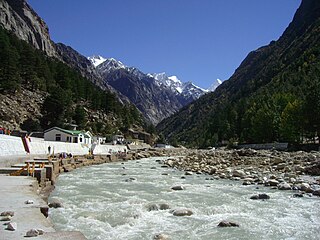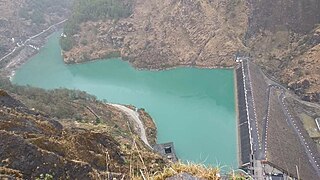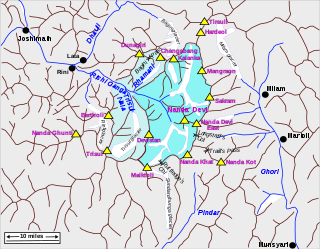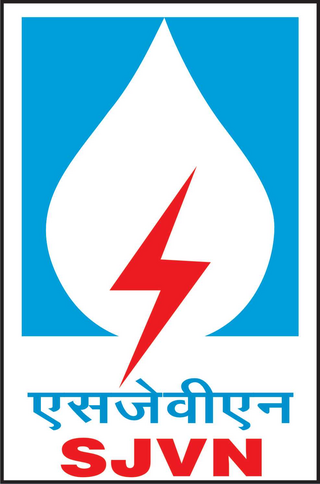
Small hydro is the development of hydroelectric power on a scale suitable for local community and industry, or to contribute to distributed generation in a regional electricity grid. Exact definitions vary, but a "small hydro" project is less than 50 megawatts (MW), and can be further subdivide by scale into "mini" (<1MW), "micro" (<100 kW), "pico" (<10 kW). In contrast many hydroelectric projects are of enormous size, such as the generating plant at the Three Gorges Dam at 22,500 megawatts or the vast multiple projects of the Tennessee Valley Authority.

Hydroelectricity, or hydroelectric power, is electricity generated from hydropower. Hydropower supplies one sixth of the world's electricity, almost 4500 TWh in 2020, which is more than all other renewable sources combined and also more than nuclear power. Hydropower can provide large amounts of low-carbon electricity on demand, making it a key element for creating secure and clean electricity supply systems. A hydroelectric power station that has a dam and reservoir is a flexible source, since the amount of electricity produced can be increased or decreased in seconds or minutes in response to varying electricity demand. Once a hydroelectric complex is constructed, it produces no direct waste, and almost always emits considerably less greenhouse gas than fossil fuel-powered energy plants. However, when constructed in lowland rainforest areas, where part of the forest is inundated, substantial amounts of greenhouse gases may be emitted.

The Alaknanda is a turbulent Himalayan river in the Indian state of Uttarakhand and one of the two headstreams of the Ganges, the major river of Northern India and the holy river of Hinduism. In hydrology, the Alaknanda is considered the source stream of the Ganges on account of its greater length and discharge; however, in Hindu tradition and culture, the other headstream, the Bhagirathi, is considered the source stream.

Nandaprayag is a town and a nagar panchayat in Chamoli district in the Indian state of Uttarakhand. Nandaprayag is one of the Panch Prayag of Alaknanda River and lies at the confluence of the Alaknanda River and Nandakini River. Nandaprayag was once the capital of the Yadu kingdom.

The Dhauliganga is a turbulent Himalayan river which rises in the border regions of India and China and flows south into the Garhwal region of Uttarakhand, India. It joins the Alaknanda, the major source stream of the Ganges river.

Loharinag Pala Hydropower Project is a run-of-the-river hydroelectricity generating project planned by the National Thermal Power Corporation (NTPC) Ltd to have an output capacity of 600 MW. The project is located on the river Bhagirathi, the headstream of the Ganges River at Loharinag Pala, below the confluence of the Songad River, next to NH 34 in Uttarkashi District of Uttarakhand state, India. This is about 100 kilometres (62 mi) upstream of the Tehri Dam.

The Koldam Hydropower Station commonly known as Koldam, is an embankment dam on the Sutlej River upstream of the Dehar Power House. It is 18 km from Bilaspur off the Chandigarh-Manali Highway (NH-21) near Barmana, Himachal Pradesh, India. The main purpose of the dam is hydroelectric power generation and it will support an 800 MW power station. The dam was constructed by NTPC Limited.

The Dhauliganga Dam was a concrete face rock and earth-fill embankment dam on the Dhauliganga River near Dharchula in Uttarakhand, India, close to the borders with Tibet and Nepal. It had very little pondage and operated as run-of-the-river. It was constructed by a joint venture of Kajima Construction Corporation, Ltd., and Daewoo Engineering & Construction with Bauer Maschinen. HRT & PH was constructed by JV of [HCC, Hindustan Construction Company] and Samsung Corporation [E&C] Group. It generates 280 MW(4x70 MW) of hydro power.

THDC India Limited is under the ownership of National Thermal Power Corporation Limited, Ministry of Power, Government of India. It was incorporated in July 1988 to develop, operate and maintain the Tehri Hydro Power Complex and other Hydro Projects. THDC India Limited is a Mini Ratna Category-I Enterprise. Present CMD of the corporation is Shri R.K Vishnoi.
The Duber Khwar Hydropower Plant is located near the town of Pattan in Kohistan, Khyber Pakhtunkhwa, Pakistan on the Duber Khwar River, a right bank tributary of the Indus River. It is approximately 340 km NW from Islamabad, the federal capital of Pakistan.
Golen Gol Hydropower Plant (GGHPP) is a hydroelectric power plant located on the Golen Gol River - a major left tributary of Mastuj River in Chitral District of Khyber Pakhtunkhwa province of Pakistan. The dam is located approximately 25 km from Chitral city, and 365 km from the provincial capital of Peshawar. Construction of Golen Gol project began in 2011, and was completed in January 2018.

The Kulekhani Dam is a rock-fill dam on the Kulekhani River near Kulekhani in the Indrasarowar Rural Municipality of Makwanpur District in Bagmati Province, Nepal. The primary purpose of the dam is hydroelectric power generation and it supports the 60 MW Kulekhani I and 32 MW Kulekhani II Hydropower Stations. Construction began in 1977 and Kulekhani I was commissioned in 1982. Kulekhani II was commissioned in 1986 and a third power station, the 14 MW Kulekhani III was expected to be commissioned in May 2015 but was delayed due to issues with the builder. The US$117.84 million project received funding from the World Bank, Kuwait Fund, UNDP, Overseas Economic Cooperation Fund and OPEC Fund. It is owned by Nepal Electricity Authority.
Nenskra Hydro Power Plant is a proposed hydroelectric power station to be located on the southern slopes of the Central Caucasus mountains in Svaneti, Georgia.

Lata Tapovan Hydro Electric Power Project is Run of the River based project located Approx 25 Km from Joshimath in dist. Chamoli in Uttarakhand. The Joshimath town is 230 km from Rishikesh. Capacity of project is 171 MW Underground The project has been suspended by the order of Supreme Court of India since 2014 and the matter is still pending in the court.

The 2021 Uttarakhand flood, also known as the Chamoli disaster, began on 7 February 2021 in the environs of the Nanda Devi National Park, a UNESCO World Heritage Site in the outer Garhwal Himalayas in Uttarakhand state, India. It was caused by a large rock and ice avalanche consisting of material dislodged from Ronti peak. It caused flooding in the Chamoli district, most notably in the Rishiganga river, the Dhauliganga river, and in turn the Alaknanda—the major headstream of the Ganges. The disaster left over 200 killed or missing. Most were workers at the Tapovan dam site.

Rishiganga is a river in the Chamoli district, Uttarakhand, India. It springs from the Uttari Nanda Devi Glacier on the Nanda Devi mountain. It is also fed from the Dakshini Nanda Devi Glacier. Continuing through the Nanda Devi National Park, it flows into the Dhauliganga River near the village Rini.

Raini is a village in Chamoli district in Uttarakhand, north India. Rini is located on the river banks at the confluence of Rishi Ganga and Dhauli Ganga rivers.
The Vishnuprayag Dam lies in Chamoli district at the confluence of Alaknanda River and Dhauliganga River, in the Indian state of Uttarakhand, India.

SJVN, formerly known as Satluj Jal Vidyut Nigam, is an Indian public sector undertaking involved in hydroelectric power generation and transmission. It was incorporated in 1988 as Nathpa Jhakri Power Corporation, a joint venture between the Government of India and the Government of Himachal Pradesh. The company has a total operating hydropower capacity of 1912 MW through its two hydropower plants—Nathpa Jhakri and Rampur. In addition, it has an installed capacity of 97.6 MW of wind power and 81.9 MW of solar power.
Located at Behali village in Kullu district of Himachal Pradesh, Parbati Hydroelectric Project is a pondage scheme that involves construction of a gravity type concrete dam, procuring bolster to the hydropower potential of river Parbati, Panch Nallah, Manihar Nallah, Huria Nallah and Sainj River.















